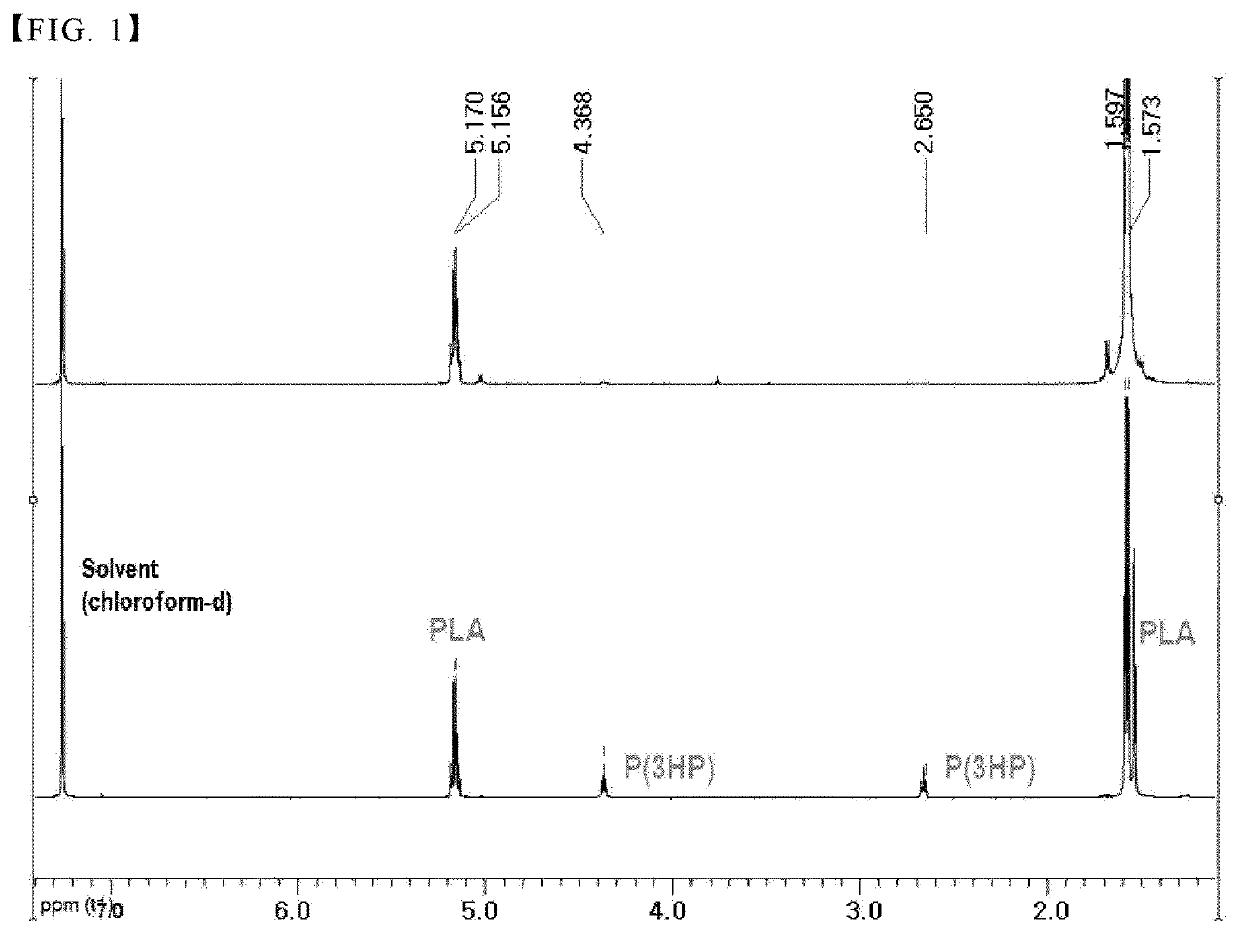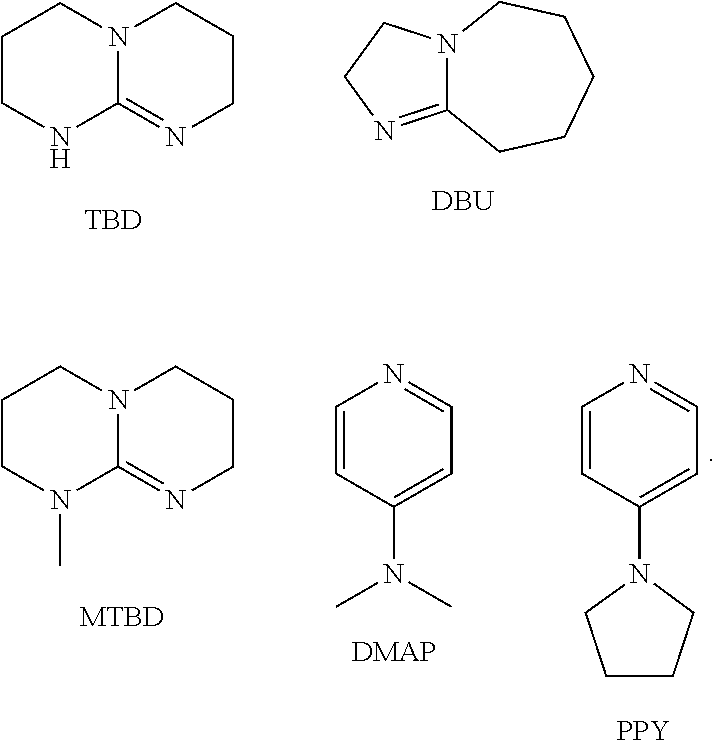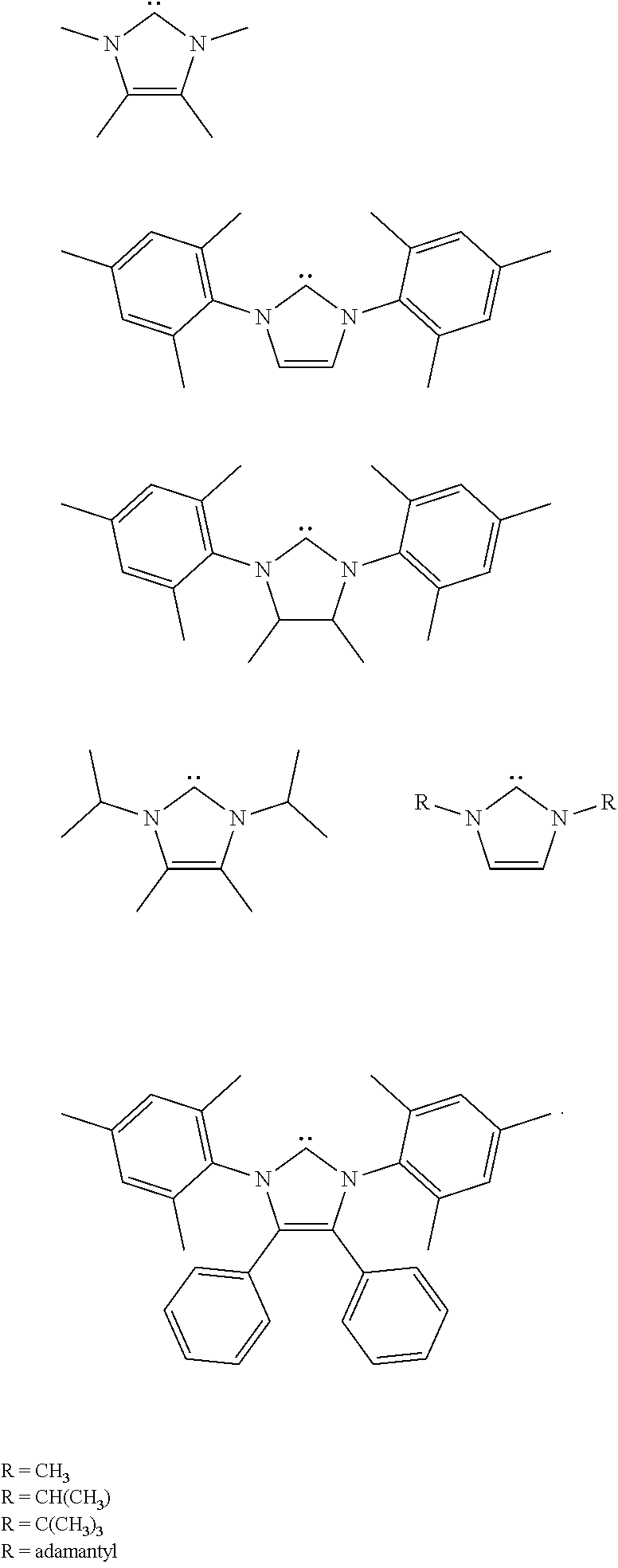Method for preparing block copolymer
a polylactide and polypropionate technology, applied in the direction of acyltransferases, enzymology, transferases, etc., can solve the problems of easy brittleness, poor elongation at break properties, and lower impact resistance of polylactide resin, etc., to achieve excellent mechanical properties such as tensile modulus, tensile strength, elongation at break and impact strength, and maintain environmental affinity
- Summary
- Abstract
- Description
- Claims
- Application Information
AI Technical Summary
Benefits of technology
Problems solved by technology
Method used
Image
Examples
examples
[0049]Hereinafter, the present disclosure will be described in more detail with reference to examples. However, these examples are for illustrative purposes only, and the scope of the invention is not intended to be limited by these examples.
examples 1 to 4
[0050](1) Biosynthesis of poly(3-hydroxypropionate) oligomer
[0051]1) Preparation of high molecular weight poly(3-hydroxypropionate)
[0052]For the biosynthesis of high molecular weight poly(3-hydroxypropionate) according to the present disclosure, first, fermentation was carried out based on the following conditions in order to prepare a fermentation broth containing 3-hydroxypropionate as a fermentation substrate. Specifically, E. coli W3110 having GDH and ALDH enzyme genes was used as a strain for fermentation. M9 was used as a medium, and 70 g / L of glycerol was used as a substrate and fermented to prepare 3-hydroxypropionate.
[0053]Thereafter, P (3HP) was fermented and produced using the 3-hydroxypropionate prepared above as a substrate. For fermentation, specifically a 5L fermentation device (internal volume: 3L) was used. RecC gene, a polyhydroxyalkanoate synthase (PHA synthase) derived from Ralstonia eutropha, and variant 540 (CPPCT_540) gene of propionyl-CoA transferase derived ...
PUM
| Property | Measurement | Unit |
|---|---|---|
| mol % | aaaaa | aaaaa |
| mol % | aaaaa | aaaaa |
| temperature | aaaaa | aaaaa |
Abstract
Description
Claims
Application Information
 Login to View More
Login to View More - R&D
- Intellectual Property
- Life Sciences
- Materials
- Tech Scout
- Unparalleled Data Quality
- Higher Quality Content
- 60% Fewer Hallucinations
Browse by: Latest US Patents, China's latest patents, Technical Efficacy Thesaurus, Application Domain, Technology Topic, Popular Technical Reports.
© 2025 PatSnap. All rights reserved.Legal|Privacy policy|Modern Slavery Act Transparency Statement|Sitemap|About US| Contact US: help@patsnap.com



